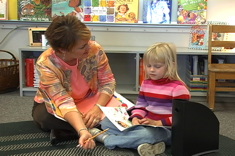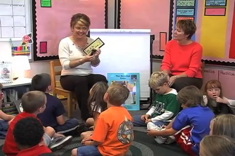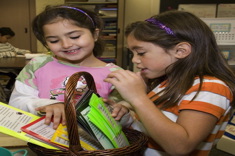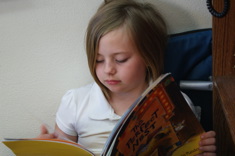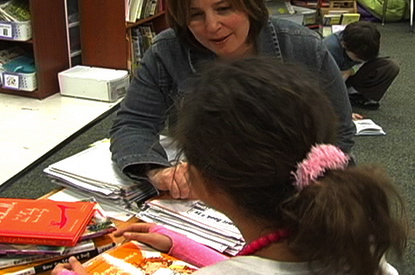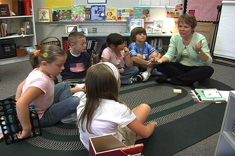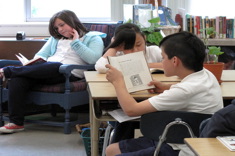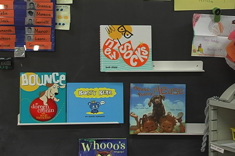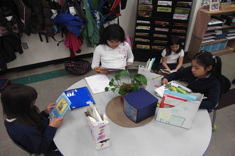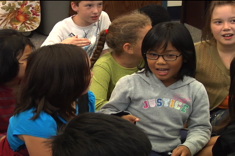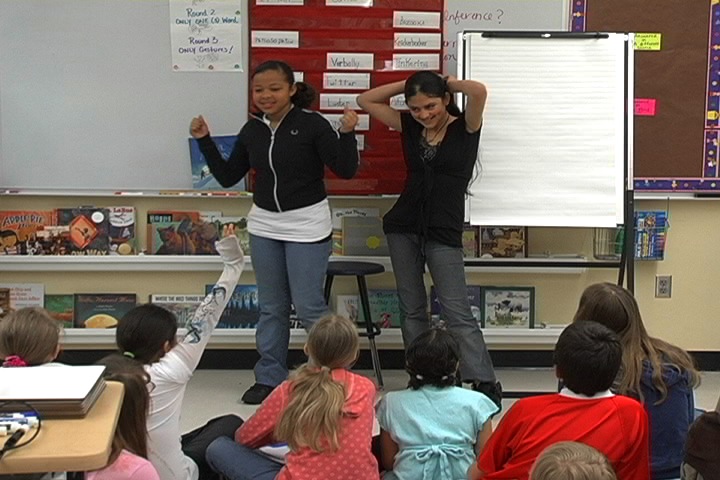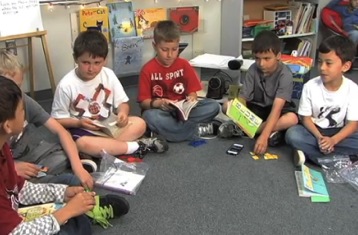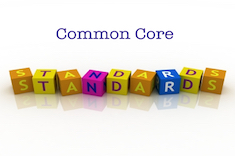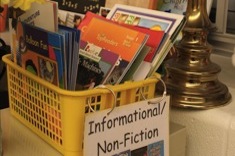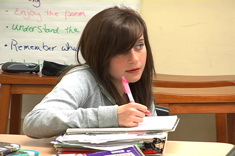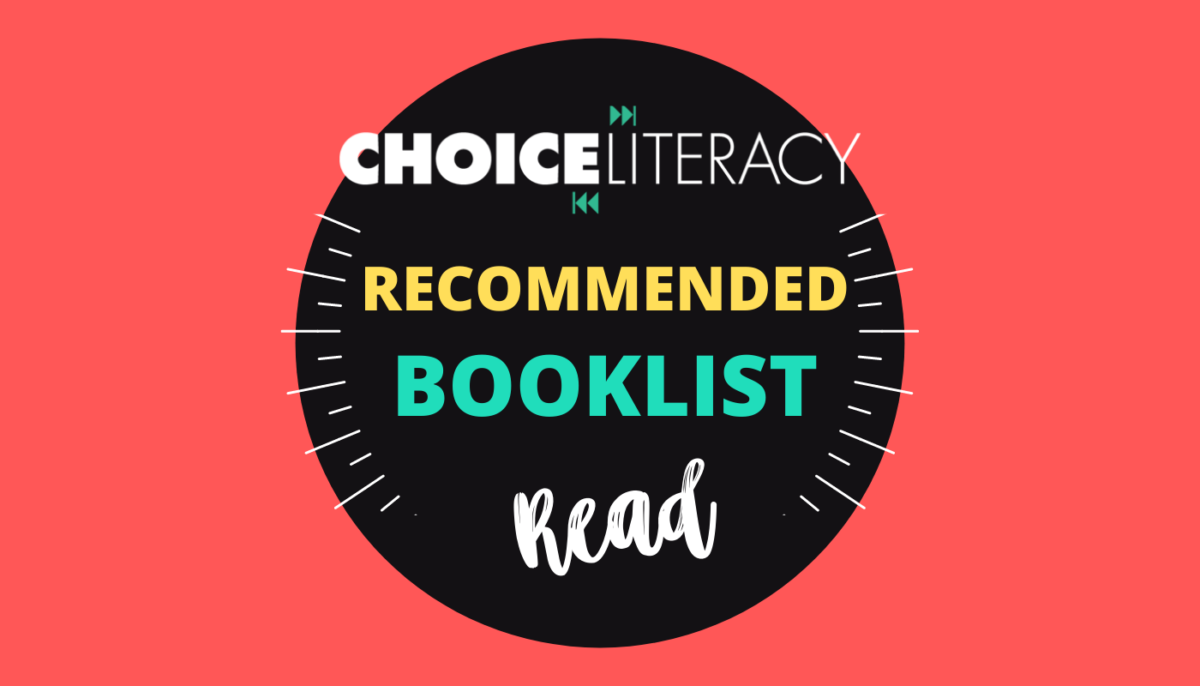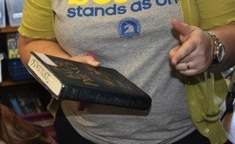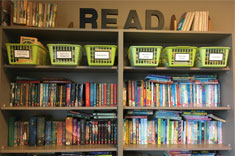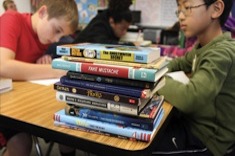Teaching Reading
Our contributors lead reading workshops in classrooms with creative flair. Over the past 12 years, we've filled our site with loads of suggestions, tools, and tips for using engaging books throughout the curriculum to hook kids on reading. Here is where you will find many stories of successful and not-so-successful workshop days, and what we learned from them. We bring these stories to life through hundreds of video examples.
Latest Content
Shopping With Ana: Expanding Our Definition of “Just Right” Books in Grades K-2
Franki Sibberson learns from her daughter about emerging readers and book choice.
Noticing Words to Expand Vocabulary: Conferring with Mariah
In this conference with six-year-old Mariah, Joan Moser of “The Sisters” has chosen to focus on expanding vocabulary.
Flexible Groups: Moving Beyond Levels to Assess Reading Needs
Gail Boushey and Joan Moser (“The Sisters”) discuss how their thinking has evolved when it comes to flexible groups. The article includes a video excerpt of Joan working with a group of kindergartners.
Whole-Class Vocabulary Lesson, Grades K-2
In this five-minute video, Joan Moser of “The Sisters” teaches a whole-class vocabulary lesson. The focus is on helping students notice interesting words, and make connections between daily read-alouds and word learning.
Inviting Students to Organize Books and Materials
Debbie Miller advocates for involving children in the organization of materials for readers and writers in the classroom.
Introducing Bull’s-Eye and Waves Written Responses in Synthesis Work
Andie Cunningham explains the bull’s-eye and wave responses her kindergartners complete to demonstrate their understanding of synthesis. A video introducing the activity is included.
Time for Reading
Shari Frost describes how literacy coaches shadowed children to get a sense of how much reading students were doing.
Concepts of Print: Conferring with a Kindergartner
In this conference with five-year-old Mariano, Joan Moser (of “The Sisters”) assesses his understanding of reading, print, and books at the start of the school year.
Minilessons to Start Conversations with Students About Books
In leadership positions, the first conversations with students about who you are and what you believe can set the tone for the year. Franki Sibberson has helpful advice for talking with readers — big and small.
Noticing Interesting Words: Small-Group Vocabulary Lesson
In this five-minute video, Gail Boushey leads a short small-group lesson on vocabulary.
What Are the Seven Reading Comprehension Strategies?
Terms like thinking or comprehension strategies get thrown around a lot, but what do we really mean? Brenda Power helps define seven strategies to build common language and understanding.
Planning for a Year of Author Studies (TEMPLATE)
Meaningful reading, writing, speaking, and listening comes out of thoughtfully planned author studies. Gayle Gentry shares her thinking and planning.
Just Because They Can Doesn’t Mean They Should: Choosing Age-Appropriate Books for Literature Circles
Kids might be missing out on great books that are a better fit if they are reading books just because they can. Shari Frost delivers a smart reminder about challenging advanced readers.
The Other Buddy: How Partnership Programs Help Older Readers
In many buddy reading programs we often tout the benefits for the younger, less experienced reader, but Shari Frost tells the story of a “big kid” reader with a legitimate reason to read books that were closer to his independent level. Read on.
Digging Deep: The Power of Rereading
Max Brand considers how rereading helps students understand and enjoy texts.
Let’s Get Some Attitude
Shirl McPhillips recalls a junior high experience that promoted serious "attitude" and an uproar among her peers.
Boys’ Book Club in Second Grade
In this video from Linda Karamatic’s second-grade classroom, boys discuss the book Fudge using the protocol provided by Linda.
Common Core Conversations: Increasing Argumentative Writing
Teachers continue to puzzle over and sort through the terminology in the Common Core related to opinion and persuasive writing. Amanda Adrian and Heather Rader consider terms and teaching strategies.
“I Am the Book”: Helping Emergent Bilingual Learners Connect with Books
Jesabel Centeno helps her emergent bilingual learners respond orally to texts and share favorite books with classmates.
Important Book, Important Notes: Guiding Young Students Through Notetaking
Suzy Kaback catches a young learner near and dear to her in the process of plagiarizing. She uses the experience to develop a template to help students and colleagues with notetaking.
A Strategy Lesson for “Drive-Thru” Readers
Who is a “drive-thru” reader? One who zips through the start of a book and discards it before finishing, moving ever more quickly through random books. Aimee Buckner has some minilesson suggestions for dealing with those students who can’t or won’t finish any books they start.
Teaching About Words, Grammar, and Mechanics Through Children’s Literature (BOOKLIST)
Franki Sibberson wants her students to be more than just good spellers — she wants them to understand words in sophisticated ways, from many different angles. Children's books are a tool for reaching that goal.
Choosing Books in Verse
Tara Barnett and Kate Mills offer tips and a booklist to position students to read novels in verse.
Panels and Pages: Using Graphic Novels in the High School Classroom
Gretchen Schroeder bolsters her students’ reading lives and deepens discussion about theme by using the rich graphic novel They Called Us Enemy as a whole-class read with her high school students. Gretchen shows how teachers can support students in deep literary analysis.
Ready-to-Go Book Talks
Leigh Anne Eck shares the dilemma of many teachers—at the start of a new school year, book talks are easy to keep up with because the fresh reads from the summer are front of mind. But as the year gets busy, it becomes more difficult to keep up, and it’s easy to let book talks fall away. Leigh Anne offers a simple and practical solution to have book talks ready no matter how busy or frazzled you are!
Setting Middle School Readers Up for Success
Tara Barnett and Kate Mills share ways to set up middle school readers for a successful independent reading life. Download two reading reflections to help students pause and consider where they are and where they want to go as readers.
Photo Booth and Young Readers
Stella Villalba uses the Photo Booth app to build stamina in a young English language learner, as well as reinforce the learning and practice at home.
Book Matchmaker: Read Alouds That Invite Young Readers to Participate
Franki Sibberson shares her latest suggestions for read alouds that invite participation from young readers.
Launching a Classroom Library
Melissa Styger slows down the launch of the classroom library to ensure it is a valuable resource all year.
Field Experience: Supporting Independent Reading, Choice and Stamina
Helping students learn to choose books and develop stamina are important to developing independent readers. Ruth Ayres designed a field experience with opportunities to see minilessons, small group instruction, team meetings and a share session that support independence in readers.
Browse Content By
Type
Category
- Assessment Tools
- Big Fresh Archives
- Booklists
- Choice Numeracy
- Classroom Design
- Common Core
- Community Building
- Conferring
- Content Literacy
- Digital Literacy
- English Language Learners
- Equity
- Family Relations
- Free Samples
- Guiding Groups
- Leadership
- Literacy Coaches
- Mentor Texts
- Minilessons
- New Teacher Mentors
- Podcasts
- Poetry
- Quote Collections
- Reading Strategies
- Self Care
- Struggling and Striving Learners
- Talking and Listening
- Teacher Study Groups
- Teaching Reading
- Teaching Writing
- Word Study and Vocabulary
Author
- Melissa Quimby
- Nawal Qarooni
- Gwen Blumberg
- Julie Cox
- The Lead Learners
- Hannah Tills
- Josie Stewart
- Ruth Metcalfe
- Mallory Messenger
- Becca Burk
- Jodie Bailey
- Vivian Chen
- Mary Brower
- Tiffany Abbott Fuller
- Stephanie Affinito
- Ruth Ayres
- Leigh Anne Eck
- Heather Fisher
- Shari Frost
- Julie Johnson
- Suzy Kaback
- Gigi McAllister
- Shirl McPhillips
- Melanie Meehan
- Cathy Mere
- Debbie Miller
- Tara Barnett and Kate Mills
- Tammy Mulligan
- Dana Murphy
- Bitsy Parks
- David Pittman
- Brenda Power
- Heather Rader
- Matt Renwick
- Mandy Robek
- Christy Rush-Levine
- Gretchen Schroeder
- Jen Schwanke
- Brian Sepe
- Katherine Sokolowski
- Stella Villalba
- Jennifer Vincent
Grade Level
Choice Literacy Membership
Articles
Get full access to all Choice Literacy article content
Videos
Get full access to all Choice Literacy video content
Courses
Access Choice Literacy course curriculum and training


